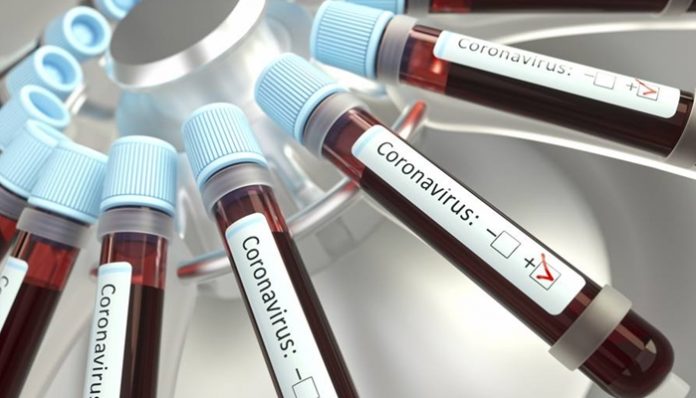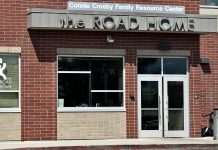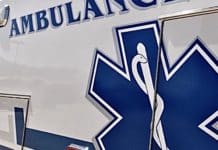UTAH, April 14, 2020 (Gephardt Daily) — Intermountain Healthcare is prepared to take additional steps to address the expected increase in the number of COVID-19 patients over the coming weeks and months, officials said Tuesday.
“Every day, Intermountain actively monitors the progression of COVID-19 cases in our communities and also across the nation and around the globe,” said Rob Allen, Intermountain’s chief operating officer and executive vice president. “We’re not in normal times and we do not have the luxury of waiting to see what will happen. We’re preparing for changes to our normal operations to best serve our patients and the larger community.”
Preparations started several weeks ago when Intermountain postponed elective procedures and non-urgent treatment, the news release said. This proactive move helped preserve personal protective equipment and opened up space in facilities for COVID-19 patients.
Intermountain has also progressively ramped up testing capacity to improve identification of the virus, and is working quickly to determine if isolation is needed, and the best way to provide care for people who have COVID-19.
Here are some of the key elements of Intermountain’s surge plan that could be implemented over the next few weeks and months if necessary:
- Ability to add more beds. Through innovative planning with hospital leaders, Intermountain has identified ways to add more intensive-care beds and more medical/surgical beds in its hospitals.
- Continued separation of patients. All hospitals will continue to safely care for all patient needs by keeping COVID-19 and non-COVID-19 patients separated.
- Large centers. Intermountain Medical Center, LDS Hospital, McKay-Dee Hospital, Utah Valley Hospital, Dixie Regional Medical Center, and Primary Children’s Hospital are designated to take care of those who are most critically ill. These facilities will continue to care for regular, critically ill patients as well as COVID-19 patients, and they are staffed with highly skilled intensivists, physicians, and respiratory therapists.
- Medical unit conversions. Many Intermountain hospitals will temporarily convert units currently used for other medical/surgical services, equipping them with ventilators and supplies to treat COVID-19. Community hospital ICUs will be equipped to treat COVID-19 patients with less severe symptoms.
- Telehealth in rural settings. Some rural hospitals may handle a small number of COVID-19 patients using TeleHealth services for consultations with specialists. Most COVID-19 patients in rural settings will transfer to larger hospitals.
- TOSH conversion. The Orthopedic Specialty Hospital (TOSH), located in Murray, will be designated as a relief-valve facility to treat medical/surgical patients who do not have COVID-19. Other hospitals in the Salt Lake Valley may direct patients to TOSH for non-COVID-19 care.
- Inpatient pediatric care. If necessary, inpatient pediatric care will be moved to Primary Children’s Hospital in Salt Lake City. Pediatric units at Riverton Hospital, McKay-Dee Hospital, and Utah Valley Hospital are prepared to reduce their inpatient admissions and begin redirecting pediatric patients to Primary Children’s as necessary. Pediatric units in these three hospitals can be temporarily converted to provide adult patient care. Primary Children’s is also prepared to accept admissions or transfers of young adult patients up to age 30 if necessary.
- Clinics. Intermountain clinics will continue to provide COVID-19 testing, urgent care visits, and necessary primary care services. Some Intermountain clinic rooms could be converted to patient rooms to support inpatient care if necessary.
- Expansion of clinical support services. Intermountain will use telehealth services in expanded ways, offer acute care at home, partner with skilled nursing facilities, and direct care to other community facilities in coordination with community and state government.
- Realtime coordination. The Intermountain Transfer Center uses a digital tracking board that provides a real-time view of available patient beds in the Intermountain system. The Transfer Center is staffed 24/7 with experienced registered nurses as well as telehealth critical care and telehealth hospitalist physician “quarterbacks” who triage patients and determine bed placement in close partnership with hospital teams. The Transfer Center also coordinates with local facilities, ground ambulance, and Life Flight for transport.
- Staffing. Using surge staffing projections, and to relieve caregivers, Intermountain is training, redeploying, and activating physicians, nurses, respiratory therapists, and support teams. For example, Intermountain is redeploying 200 clinic-based medical assistants who’ve been retrained to provide care in hospitals. Anesthesiologists are transitioning from surgery support to helping treat COVID-19 patients needing respiratory care in ICUs. Plans include potentially activating clinicians who are in administrative roles or have recently retired, and partnering with local nursing schools to hire nurses in their senior year.
“To combat the COVID-19 pandemic, we’re dedicating Intermountain’s resources to supporting our communities in every way we can,” said Allen. “Our remarkable caregivers are courageously rising to the challenge. We’re united with other health systems, local and state government, and our communities, to coordinate services and share resources so patients can continue to get the vital care they need.”






